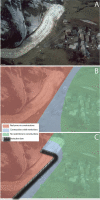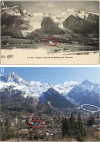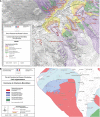Towards a holistic paradigm for long-term snow avalanche risk assessment and mitigation
- PMID: 36324022
- PMCID: PMC9989122
- DOI: 10.1007/s13280-022-01804-1
Towards a holistic paradigm for long-term snow avalanche risk assessment and mitigation
Abstract
In mountain territories, snow avalanches are a prevalent threat. Long-term risk management involves defining meaningful compromises between protection and overall sustainability of communities and their environment. Methods able to (i) consider all sources of losses, (ii) account for the high uncertainty levels that affect all components of the risk and (iii) cope for marked non-stationarities should be employed. Yet, on the basis of a literature review and an analysis of relations to Sustainable Development Goals (SDGs), it is established that snow avalanche risk assessment and mitigation remain dominated by approaches that can be summed up as deterministic, hazard oriented, stationary and not holistic enough. A more comprehensive paradigm relying on formal statistical modelling is then proposed and first ideas to put it to work are formulated. Application to different mountain environments and broader risk problems is discussed.
Keywords: Environmental risks; Mountains; Socio-environmental changes; Statistical modelling; Sustainable development goals; Systemic approach.
© 2022. The Author(s) under exclusive licence to Royal Swedish Academy of Sciences.
Conflict of interest statement
The authors have no competing interests to declare that are relevant to the content of this article.
Figures









References
-
- Altaweel, M., Virapongse, A., Griffith, D., Alessa, L., Kliskey, A. (2015). A typology for complex social-ecological systems in mountain communities. Sustainability: Science, Practice and Policy, 11, pp. 1–13.
-
- Ammann, W., Bebi, P. (2000). WSL Institute for Snow and Avalanche Research SLF, Der Lawinenwinter 1999, Ereignisanalyse. SLF Davos, 588 p.
-
- Ancey C. Are there “dragon-kings” events (ie genuine outliers) among extreme avalanches? The European Physical Journal Special Topics. 2012;205:117–129. doi: 10.1140/epjst/e2012-01565-7. - DOI
-
- Arnalds P, Jonasson K, Sigurdson ST. Avalanche hazard zoning in Iceland based on individual risk. Annals of Glaciology. 2004;38:285–290. doi: 10.3189/172756404781814816. - DOI
Publication types
MeSH terms
Grants and funding
LinkOut - more resources
Full Text Sources

